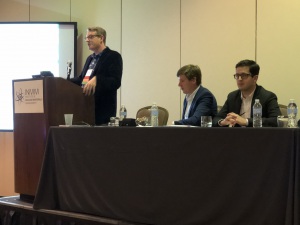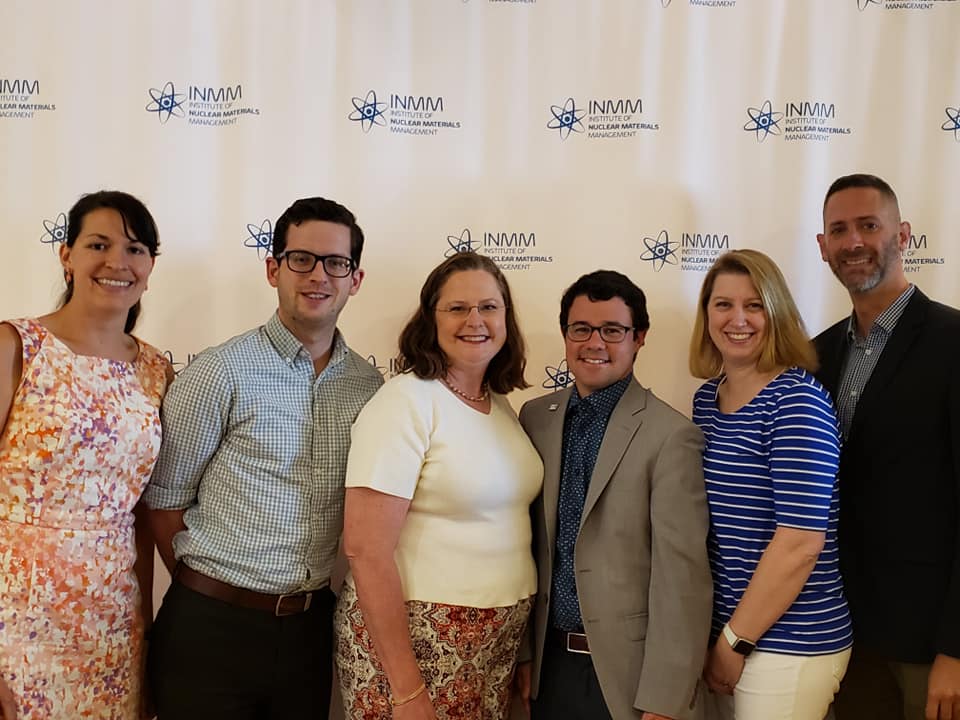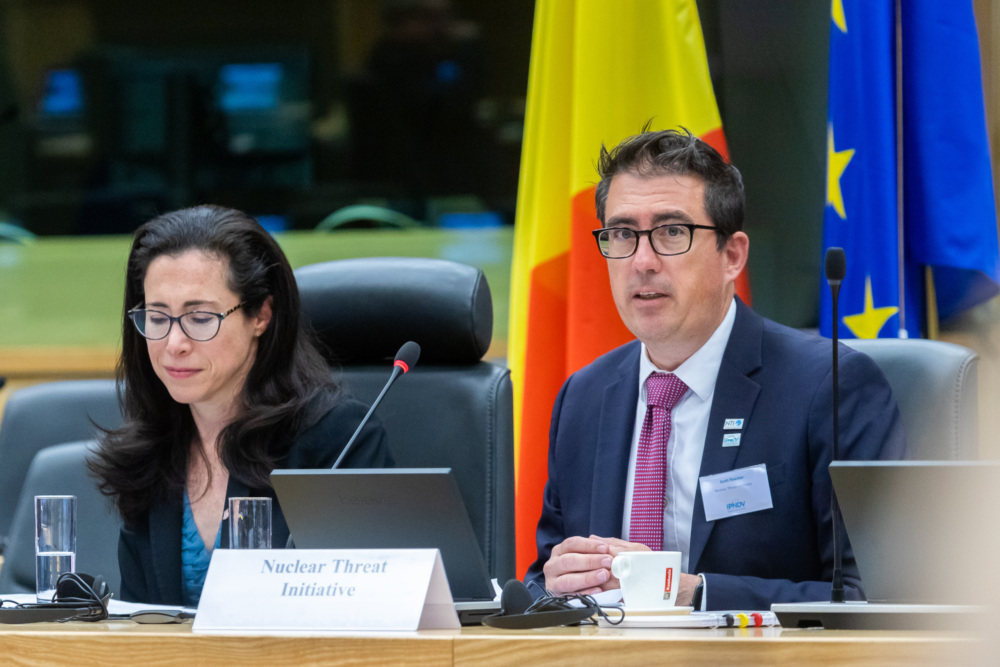
Alex Bednarek
Program Officer
Atomic Pulse
Earlier this month, experts from the Nuclear Threat
Initiative addressed a host of nuclear security-related issues at the 60th
Annual Meeting of the Institute for Nuclear Materials Management (INMM), a “nonprofit
technical organization with worldwide membership of engineers, scientists,
technicians, managers, policymakers, analysts, commercial vendors, educators,
and students.” The INMM’s annual meetings always draw an impressive crowd of
technical and policy experts to discuss the latest research, development, and
analysis in the nuclear materials management space. The diversity of expertise allows
for a packed week of presentations on topics ranging from facility operations
and materials control and accountability to international safeguards,
nonproliferation, and arms control.
As a sustaining member of INMM, NTI always sends a team to
the annual meeting to learn, present, participate, and lead some of the
discussions. This year, six NTI experts traveled to Palm Desert, CA to discuss
or present on: state systems of accounting and control; advanced nuclear
reactors; arms control and disarmament verification; and security of
radioactive sources, both in the United States and internationally. These
experts represented NTI’s Materials Risk Management program (Vice President Laura
Holgate, Senior Program Officer Leon Ratz,
and Program Officer Jessica
Bufford) and International Fuel Cycle Strategies program (Vice President
Corey
Hinderstein, Senior Director Richard
Johnson, and me, Program Officer Alex
Bednarek).
In addition to chairing a session on arms
control verification and supporting my NTI colleagues during their
presentations, I found myself bouncing in and out of fascinating sessions with policy
discussions on management of spent nuclear fuel around the world, advanced
reactor safeguards, comparisons between nuclear and aviation security, and safety
and security cultures in nuclear facilities.

Those were some of my favorites, but I also find it fun at
INMM to have the chance to sit in on and learn from technical discussions, no
matter how “in-the-weeds” they might get.
INMM also offers the chance to reconnect with old friends
and colleagues and build new networks among the hundreds of attendees. During session
breaks, attendees are encouraged to explore the exhibit hall, where booths are staffed
by representatives from the US National Laboratories, the broader national
security complex, and the nuclear industry. These breaks are also a great time
to see the poster presentations accepted for display. These posters give brief
overviews of some of the technical and non-technical work happening at universities
and offices around the world. This year, work in eight countries was
represented.
The closing plenary is always a highly anticipated event and
this year, the meeting was capped off with a riveting session hosted by Tomás
Bieda, from the Undersecretariat of Nuclear Energy of Argentina. Tomás led an
interactive discussion on the challenge of mitigating insider threats at
nuclear facilities using a fictional scenario in which various “reactor
employees” gave testimonies about concerning behaviors they had observed in a “reactor
operator.” Using an anonymous online polling system, the audience was then prompted
to answer questions related to trust, observed behavior, and appropriate
responses to personnel issues based on these testimonies.
Overall, the 60th Annual Meeting of the INMM was
a great success, and my colleague Laura Holgate may have summed it up best on Facebook: “Almost 500 attendees from across the country and around the world, discussing how to know how much (nuclear material) you have, know where it is, prevent it from moving when it’s not supposed to, and find it if it goes missing.”
I look forward to #INMM20!
Learn more about INMM here.
Find the full agenda of the 60th Annual Meeting
of the INMM here.
Sign up for our newsletter to get the latest on nuclear and biological threats.
Nuclear Security is Only as Strong as the Weakest Link: 2020 NTI Index Highlights Cybersecurity and Insider Threat Prevention
Fourth Edition of NTI Index Underway
Scott Roecker, vice president of the Nuclear Materials Security team, sat down with NTI's Mary Fulham for the latest in Atomic Pulse's "Get to Know NTI" series.



